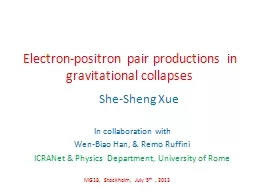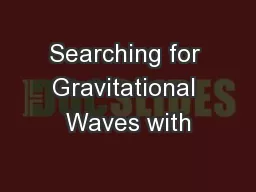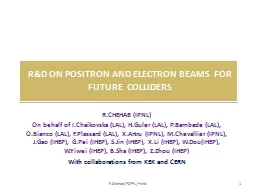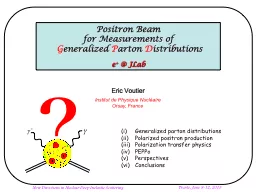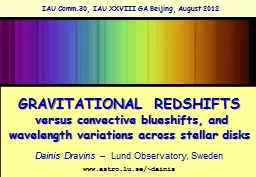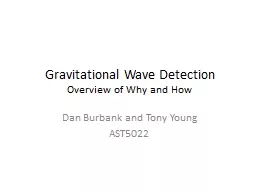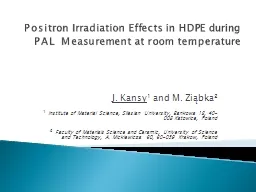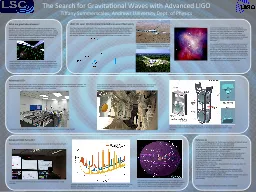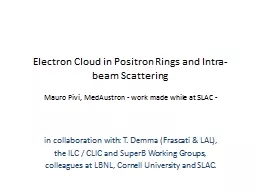PPT-Electron-positron pair productions in gravitational
Author : ellena-manuel | Published Date : 2015-11-09
collapses In collaboration with WenBiao Han amp Remo Ruffini ICRANet amp Physics Department University of Rome SheSheng Xue MG13 Stockholm July 5
Presentation Embed Code
Download Presentation
Download Presentation The PPT/PDF document "Electron-positron pair productions in gr..." is the property of its rightful owner. Permission is granted to download and print the materials on this website for personal, non-commercial use only, and to display it on your personal computer provided you do not modify the materials and that you retain all copyright notices contained in the materials. By downloading content from our website, you accept the terms of this agreement.
Electron-positron pair productions in gravitational: Transcript
Download Rules Of Document
"Electron-positron pair productions in gravitational"The content belongs to its owner. You may download and print it for personal use, without modification, and keep all copyright notices. By downloading, you agree to these terms.
Related Documents

